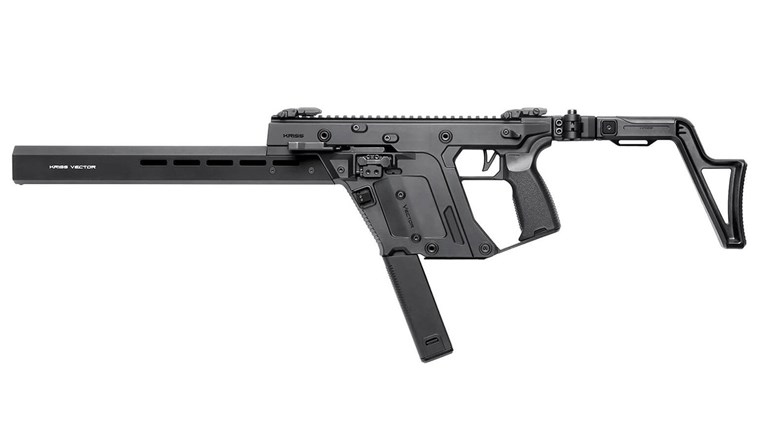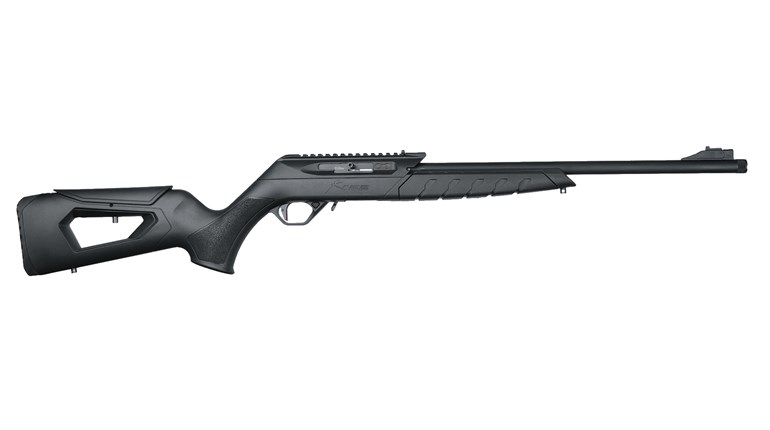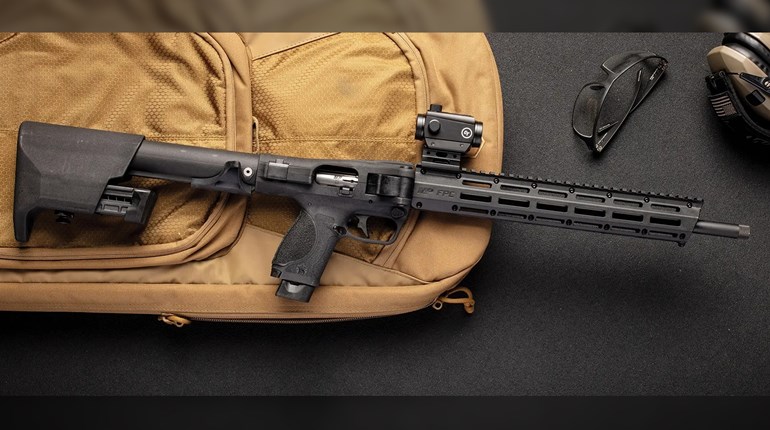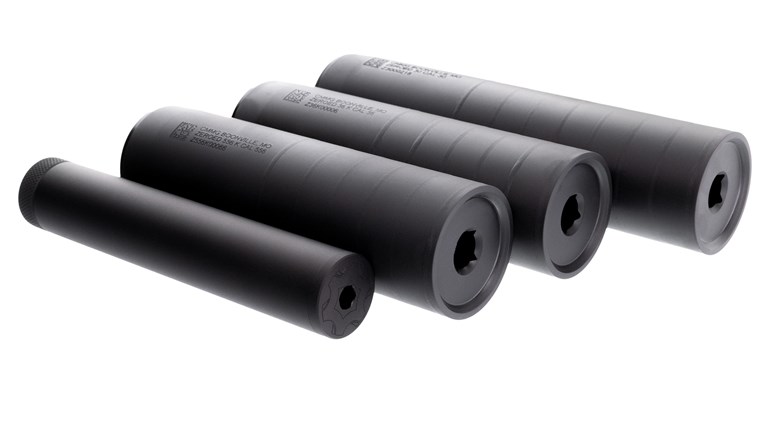
When a vintage American caliber meets a classic rifle—well carbine—design, expect good things.
This feature appears in the December ‘17 issue of NRA America’s 1st Freedom, one of the official journals of the National Rifle Association.
If there is such a thing as a “balance of power” in American tastes for pistol calibers, it would be difficult to contend that it hasn’t shifted in recent years. Georg Luger’s turn-of-the-20th-century brainchild—the 9 mm Parabellum—has been busily sweeping out larger and smaller competitors in a host of roles for nearly 120 years. Reliable, accurate and versatile, the tide of .355s is swelled by the dizzying variety of firearms that use it. From pocketable concealed-carry examples to pistol caliber carbines (PCC), it’s easy to get the idea—with apologies to “Star Trek” fans—that “resistance is futile.”

Another tough case to make would be that any caliber has been more stalwart in that resistance than John Browning’s .45 ACP. Born on this side of the Atlantic in the same era, it was intended to solve the same problem: how to put fight-ending power in an auto-loading handgun. Even with modern projectile design tilting the playing field somewhat back in favor of the 9 mm, few would fault the big bore except on the basis of a thoroughly modern preference—not altogether unwise—for higher round count.
We submit that a new impediment is glowering back at 9 mm hegemony, at least in the white-hot PCC arena—CMMG’s Guard PCC in .45 ACP. In an unexpectedly light, smooth-running combination of proven cartridge capability and edge-of-the-art engineering, all the advantages and pleasures of the Browning cartridge come together in this Stoner-pattern/AR blowback. One magazine is all it takes to convince most anyone that there are some clever people at work in Boonville, Mo.
The externals of the Guard are absent any guile. Magpul furniture at stock and grip are familiar and welcome, and a practiced eye will note CMMG’s own 14-inch handguard over a 16-inch barrel. The latter belies the light overall heft (well under 6 pounds), and you’ll be thinking “H-Bar” until you recollect the .451 bore. The resulting 1-in-16, medium taper barrel yields exemplary balance with or without an optic, adding to the appeal if smaller/lighter statured shooters are part of your clan.
Pinned above the billet lower and inside the 7075 t6 forged upper is where the Guard makes a unique departure. We called it “blowback,” and that is technically correct—no direct gas or piston drives the action from a gas block port. But true blowbacks resist ignition pressure solely with spring-charged mass, whereas the CMMG actually cams open and shut like a gas-driven rifle before the bolt mass and buffer/recoil spring enter the fray. This keeps the Guard light, but also softens the action of the big .45 in astonishing fashion. There is no sense of the carbine being “slow,” however: We shot it to a top-three finish in a local USPSA-style match with 94 percent alphas. Accuracy questions, we trust, are answered as well.

We’ve already lauded the Guard as “clever,” but nearly a thousand rounds later, that accolade seems pointedly insufficient. Whether you’ve a mind to buck the 9 mm trend, get on the PCC train or put a classic, all-American .45 in your collection, we see no ready way to do it better than with a CMMG Guard.
NUTS AND BOLTS
AR Fidelity
In terms of fidelity to what many would call the “manual of arms,” the Guard excels without obvious fanfare. If you know the Stoner pattern, the only surprises you’ll find are pleasant ones (better magazine release and goof-proof pins). Yet essential “schooling” with the type has not been sacrificed to preferences or, worse, dubious improvements. The bolt release, safety, trigger, forward assist, grip and stock all work precisely as they do on mil-spec rifles, and at many points appear interchangeable—a profound rarity in the guts of many other PCCs.
If that weren’t enough, many interior parts are rifle-compatible in terms of substitution, so making a CMMG run even better—if only in terms of your own preferences—ought to be a piece of cake.
Compensation

Compensators aren’t even slightly news when it comes to making rifles and pistols more manageable. Comps accomplish their job by channeling and/or timing the venting of powder combustion gases. In rifles, the available pressure is ample due to higher powder volumes, and in pistols because the barrel plus case/chamber volume is small. In carbines like the Guard, such harvesting and redirection is more complex: Gas pressure is lower, and physical volume is comparatively larger. The SV comp strikes this difficult balance well, and lets the Guard shoot full-power ammunition in comfort. It also left us in hearty disagreement with those who argue comps are ineffective on PCCs.
Magazines
If one of the biggest appeals of the Guard isn’t that it runs from rugged and widely available Glock magazines, it ought to be. These are an extremely common choice in PCC circles and feed carbines from many manufacturers. CMMG wisely took the same course, and in doing so assured great reliability even with moderately bizarre bullet profiles—our only feed issues appeared when we tried to be smarter than the rifle. From needle-nosed 155-grain wadcutters up to 255-grain flat points, all were gobbled up and promptly dispensed with reassuring indifference by the Guard.
Sight Options
The Guard came to us without sights, but a rail-topped receiver and KeyMod handguard made this an elementary problem to solve. A nice set of Magpul Pros were on hand to get range work started and performed as they always do—with robust perfection. Down the road we stepped up to a Vortex optic from the Viper series and reveled in the speed that 1x and both-eyes-open shooting made easy. Higher available magnification soon had us shooting farther out, and revealed two other long-standing .45 ACP characteristics to be as intransigent as ever: Precise hits were not just superbly regular, but laughably easy to spot. Take that, 9 mm.
Frank Winn has been studying arms and their relationship to tyranny, meaningful liberty and personal security all his adult life. He has been a firearms safety/shooting instructor for more than 20 years, and earned state, regional and national titles in several competitive disciplines.


































